Nissan Leaf vs Hyundai Inster – Differences & prices compared
Two cars, one duel: Nissan Leaf meets Hyundai Inster.
Which one wins in performance, efficiency and value for money? Find out now!
Costs and Efficiency:
When it comes to price and running costs, the biggest differences usually appear. This is often where you see which car fits your budget better in the long run.
Hyundai Inster has a significantly advantage in terms of price – it starts at 20500 £, while the Nissan Leaf costs 30800 £. That’s a price difference of around 10286 £.
In terms of energy consumption, the advantage goes to the Hyundai Inster: with 14.30 kWh per 100 km, it’s a bit more efficient than the Nissan Leaf with 16.70 kWh. That’s a difference of about 2.40 kWh.
As for range, the Nissan Leaf performs slight better – achieving up to 385 km, about 15 km more than the Hyundai Inster.
Engine and Performance:
Power, torque and acceleration say a lot about how a car feels on the road. This is where you see which model delivers more driving dynamics.
When it comes to engine power, the Nissan Leaf has a convincingly edge – offering 217 HP compared to 115 HP. That’s roughly 102 HP more horsepower.
In acceleration from 0 to 100 km/h, the Nissan Leaf is clearly quicker – completing the sprint in 6.90 s, while the Hyundai Inster takes 10.60 s. That’s about 3.70 s faster.
In terms of top speed, the Nissan Leaf performs hardly perceptible better – reaching 157 km/h, while the Hyundai Inster tops out at 150 km/h. The difference is around 7 km/h.
There’s also a difference in torque: Nissan Leaf pulls convincingly stronger with 340 Nm compared to 147 Nm. That’s about 193 Nm difference.
Space and Everyday Use:
Cabin size, boot volume and payload all play a role in everyday practicality. Here, comfort and flexibility make the difference.
Seats: Nissan Leaf offers slightly more seating capacity – 5 vs 4.
In curb weight, Hyundai Inster is slightly lighter – 1380 kg compared to 1580 kg. The difference is around 200 kg.
In terms of boot space, the Nissan Leaf offers evident more room – 394 L compared to 280 L. That’s a difference of about 114 L.
In maximum load capacity, the Hyundai Inster performs noticeable better – up to 1059 L, which is about 269 L more than the Nissan Leaf.
When it comes to payload, Nissan Leaf a bit takes the win – 415 kg compared to 357 kg. That’s a difference of about 58 kg.
Who comes out on top?
Overall, the Nissan Leaf shows itself to be outperforms in nearly all aspects and secures the title of DriveDuel Champion.
It convinces with the more balanced overall package and proves to be the more versatile choice for everyday use.
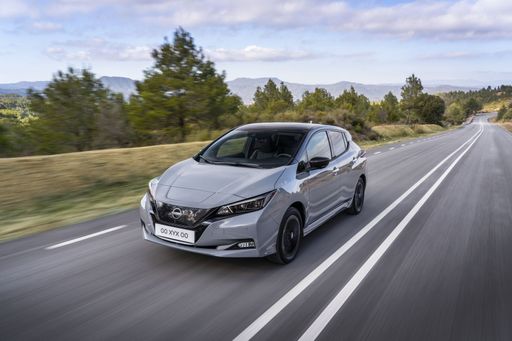 @ germany.nissannews.com
@ germany.nissannews.com
Nissan Leaf
Nissan Leaf
The Nissan Leaf stands out as a pioneering model in the realm of electric vehicles, known for its impressive blend of practicality and eco-friendliness. It offers a smooth and quiet driving experience, making it an ideal choice for city commuting and longer journeys alike. The interior design is both comfortable and intuitive, providing drivers with a sense of modernity and ease of use.
details @ germany.nissannews.com
@ germany.nissannews.com
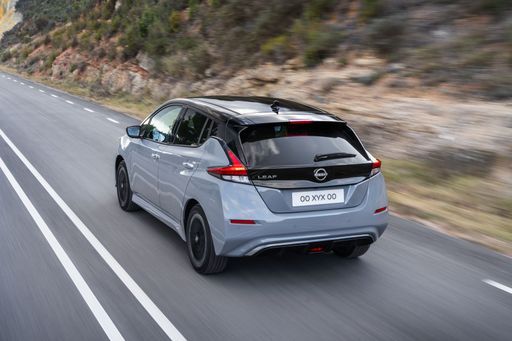 @ germany.nissannews.com
@ germany.nissannews.com
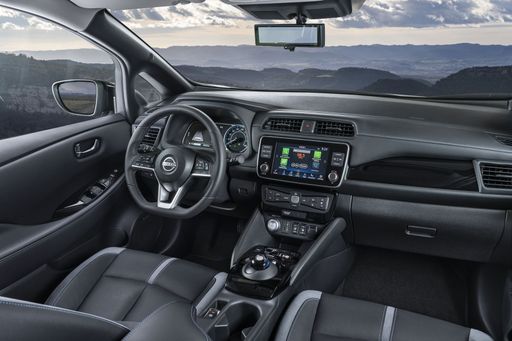 @ germany.nissannews.com
@ germany.nissannews.com
 @ germany.nissannews.com
@ germany.nissannews.com
Hyundai Inster
The Inster has quickly captured the attention of automotive enthusiasts with its striking design and dynamic performance. This model seamlessly blends advanced technology with comfort, making it an ideal choice for both daily commutes and adventurous road trips. With its spacious interior and innovative features, the Inster promises an exhilarating driving experience that doesn’t compromise on practicality.
details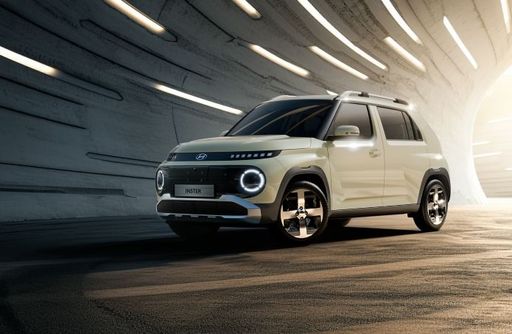 @ hyundai.news
@ hyundai.news
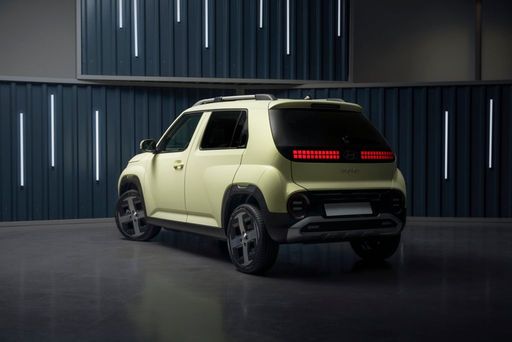 @ hyundai.news
@ hyundai.news
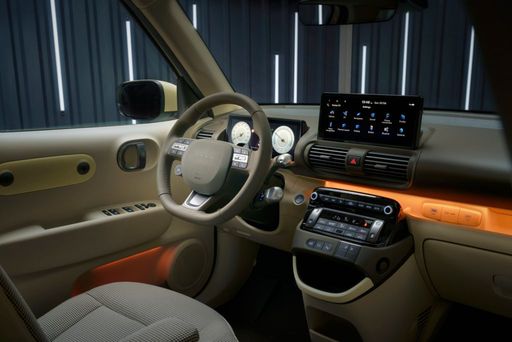 @ hyundai.news
@ hyundai.news
 @ germany.nissannews.com
@ germany.nissannews.com
|
 @ hyundai.news
@ hyundai.news
|
|
|
|
Costs and Consumption |
|
|---|---|
|
Price
30800 - 37200 £
|
Price
20500 - 25800 £
|
|
Consumption L/100km
-
|
Consumption L/100km
-
|
|
Consumption kWh/100km
16.7 - 17.8 kWh
|
Consumption kWh/100km
14.3 - 15.1 kWh
|
|
Electric Range
270 - 385 km
|
Electric Range
327 - 370 km
|
|
Battery Capacity
39 - 59 kWh
|
Battery Capacity
42 - 49 kWh
|
|
co2
0 g/km
|
co2
0 g/km
|
|
Fuel tank capacity
-
|
Fuel tank capacity
-
|
Dimensions and Body |
|
|---|---|
|
Body Type
Hatchback
|
Body Type
SUV
|
|
Seats
5
|
Seats
4
|
|
Doors
5
|
Doors
5
|
|
Curb weight
1580 - 1756 kg
|
Curb weight
1380 - 1433 kg
|
|
Trunk capacity
385 - 394 L
|
Trunk capacity
238 - 280 L
|
|
Length
4490 mm
|
Length
3825 - 3845 mm
|
|
Width
1788 mm
|
Width
1610 mm
|
|
Height
1540 - 1545 mm
|
Height
1575 - 1610 mm
|
|
Max trunk capacity
790 L
|
Max trunk capacity
1059 L
|
|
Payload
384 - 415 kg
|
Payload
317 - 357 kg
|
Engine and Performance |
|
|---|---|
|
Engine Type
Electric
|
Engine Type
Electric
|
|
Transmission
Automatic
|
Transmission
Automatic
|
|
Transmission Detail
Reduction Gearbox
|
Transmission Detail
Reduction Gearbox
|
|
Drive Type
Front-Wheel Drive
|
Drive Type
Front-Wheel Drive
|
|
Power HP
150 - 217 HP
|
Power HP
97 - 115 HP
|
|
Acceleration 0-100km/h
6.9 - 7.9 s
|
Acceleration 0-100km/h
10.6 - 11.7 s
|
|
Max Speed
144 - 157 km/h
|
Max Speed
140 - 150 km/h
|
|
Torque
320 - 340 Nm
|
Torque
147 Nm
|
|
Number of Cylinders
-
|
Number of Cylinders
-
|
|
Power kW
110 - 160 kW
|
Power kW
71 - 85 kW
|
|
Engine capacity
-
|
Engine capacity
-
|
General |
|
|---|---|
|
Model Year
2019
|
Model Year
2025
|
|
CO2 Efficiency Class
A
|
CO2 Efficiency Class
A
|
|
Brand
Nissan
|
Brand
Hyundai
|
What drivetrain options does the Nissan Leaf have?
Available configurations include Front-Wheel Drive.
The prices and data displayed are estimates based on German list prices and may vary by country. This information is not legally binding.
